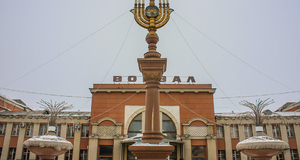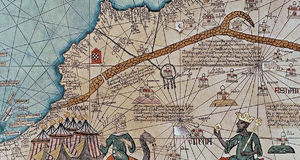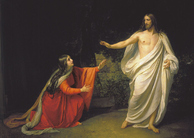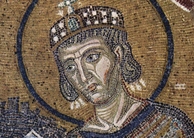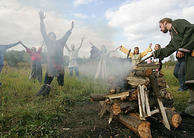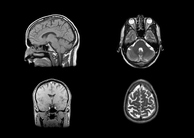Jews and Jewry Law in Medieval Germany
By
2011, Vol. 3 No. 07 | pg. 1/1
KEYWORDS:
Perhaps for no group of people were ‘the dark ages’ so aptly named as for the Jews. Over the span of one thousand years life changed wildly for the Jewish people and not in a positive way. At the start of the 5th Century the future looked bright but by the 15th century life was engulfed in darkness. This essay investigates exactly how the legal position of the Jews deteriorated to such a low level. Considering the legal position of Jews in Medieval Germany, the question one must ask is "what was Jewry Law like at that time?" Jewry Law can be understood as Christian legal materials and documents concerning Jews (Cohen 1994:30), and was executed by two main bodies: the monarch and the church. One of the most famous characteristics of the Medieval period was what could be described as ‘Christian piety’ or ‘religious fanaticism’ (Adler 1969:11). Christianity became the focal point of society and the church held great power. People generally followed the edicts of ecclesiastical councils and pontifical opinions (Cohen 1994:36) lest they risk excommunication, an utter disgrace in medieval society. So whilst secular law was primary legislation, and even though canon law did not always have a direct impact on state Jewry Law, it is still important to consider church made law when investigating the legal position of medieval German Jews(Cohen 1994:42). Jewry Law was, like German medieval law in general, of a disintegrated nature (Kisch 1935: 69). It also frequently overlapped and contradicted itself, thanks to the wide range of sources from which it derived (Cohen 1994:31). Medieval Jewry Law has been described as a ‘law of privilege made up of occasional favours and restrictions of various kinds without reference to any fixed principle’ (Kisch 1935:69). But perhaps its most unique and distinctive quality was the special relationship between Jews and the Imperial powers (Poliakov 1955:81). The rulers viewed the Jews as their own personal property, at their disposal for better or worse. The German emperors justified this view by stating that as ‘successors of the emperors of Rome, they were lords of their Jewish captives and the Jews were serfs of the imperial chamber’ (Goodman 1911:103).This is known as the concept of chamber serfdom. Adler (1969:13) quotes a German prince as saying ‘The Jews belong to us in body, soul and earthly goods. We can do with them as we please and as we find convenient’. This attitude of convenience is evident in the way that kings used their powers over Jews, going from protection to degradation to expulsion. The concept of chamber serfdom itself can be seen as a ‘mix of protectionism and cavalier exploitation, all geared to ensure the financial utility of the Jews to the state’ (Cohen 1994:45). How the Kings decided to use their power depended on financial incentives. When the Jews were of economic benefit they were protected and when they no longer provided benefits to the crown they were treated badly. The first appearance of legalisation regarding chamber serfdom appears in Henry IV’s imperial land peace of 1103 (Kisch 1935:68). Made in reaction to the crusade threats, it enabled him to give special protection to the Jews (Brenner 2008: 100).As nice as it might be to claim this as a kind humanistic act it probably had to more to do with the economic benefits of Jewish trading and business. There is also the emergence of the idea that the emperor could begin charging for his services of protection. Eventually the protection of Jews is seen as the king’s prerogative, since the right of protection carried the obligation to pay taxes (Kisch 1935:68). Essentially the Jews are paying to live through penalties and taxes (Adler 1969:12). The Judensteier (the Jewish tax) began to comprise the largest share of revenue for the imperial chamber (Brenner 2008:101). In 1157 Frederick I issues a charter for the ‘Jews of Worms’, confirming the aforementioned charter issued by Henry IV. It includes the rights of inviolability of property, freedom of travel without toll payments and fair legal treatment amongst others. It also contains the phrase ad cameram nostram (literally meaning the Jews of Worms ‘belong to our chamber’), which is a vital point in the development of the concept of chamber serfdom (Cohen 1994:45). Later in 1236, Frederick II started referring to Jews as Servi Camerae Nostri (Serfs of our chamber), an application of Pope Innocent III’s concept of chamber serfdom Kammerknechtschaft (Brenner 2008:101). This so-called ‘vertical alliance’ sometimes resulted in ‘horizontal conflict’ (Brenner 2008:100) with municipal bodies and local rulers. Altmann (1940:7) cites an example of this tension in the rabbinic responsa given by Rabbi Hayyim of Regensburg. The local Regensburg government had requested that the Jewish community pay an extra municipal tax towards the fortification of the town. Rabbi Hayyim believed that the tax was unreasonable because the town was already adequately protected and that it was just a ploy to extract more money from the Jews. He believed they could refuse to pay an unreasonable municipal tax because they were protected by the Dukes of Bavaria(Altmann 1940:8). This response shows the Jewish acceptance of the King’s protection. While in theory it may have been the highest protection (Brenner 2008:100) in practical terms it did not always work that way. Rabbi Hayyim acknowledges that if they were to defend their rights and not pay the tax that they would subject to threats of violence and discrimination (Altmann 1940:8). The theoretical protection of distant King was not going to much help when it came to direct threats to individual communities. As time went on the protection given by the Monarch became less and less enforced. In the late Middle Ages the policy of protection had faded into something more sinister. By the 14th century Charles VI was negotiating treaties that gave ‘carte blanche’ to the killing of Jews as long as he received compensation for his loss (Adler 1969:13). When Jews ceased to make any primary contributions to the economy they become dispensable (Johnson 1987:230). So by the end of the 15th century and beginning of 16th century, expulsions heralded a tragic end for many Jewish communities (Kisch 1935:63). They received no intervention or protection from the monarch who had once granted those privileges. From the 12th century onwards there were various legal provisions emerging which limited the status of Jews within medieval society (Brenner 2008:101). In the early Middle Ages Jews were relatively well-integrated in society but by the end of the medieval period they were isolated outcasts. An important aspect of the position in society is the legality of employment, in other words what work was open to Jews? In medieval times the profession you held largely determined your place in the social and economic hierarchy. Even now in modern times, jobs provide social opportunities through friendships and interactions with wider society. Therefore looking at the jobs which Jews occupied helps us to garner a clearer idea of the legal position of the Jewish people in the practical sense. A common career for a medieval Jew was trading. The legal position of the tradesman is significant, as they were often given individual grants of privilege which could then be extended to his whole community. These grants such as those given by Louis the Pious in 825 guaranteed protection for their lives , exemption from taxes, freedom of religious practice and the establishing of rabbinic courts to deal with Jewish legal matters (Brenner 2008:97). Merchants created precious economic revenue and so governing authorities saw fit to encourage trading, creating a mutually beneficial relationship between themselves and traders. In 1084 the Bishop Ruediger granted the Jews of Speyer the privilege of building a wall around their quarter as he believed that treating the Jews with the favour would be of economic benefit and would make ‘ a city out of the village of Speyer’ because of all the business they would herald(Brenner 2008:98). This is a sign of the economic utility of Jews during this period (Cohen 1994). Until the 14th century there is evidence of lively Jewish commercial activity along the Rhine (Poliakov 1955:81) but by the 1500s Jews were eliminated from large-scale trade (Johnson 1987:230) There is also evidence that some early Jews held diplomatic roles, an example being the ‘the Jew Isaac’ whom Charlemagne sent as an emissary to Caliph Harun al-Rashid (Brenner 2008:97).The range of jobs that the Jews held at this time indicates their depth of participation and inclusion in society. They played vital roles in communities, towns, cities and in the case of ‘Isaac ‘to the kingdom. However things begin to change with the appearance of laws that, while not explicitly barring Jews, do so by default with Christianity becoming a necessary prerequisite for certain jobs. The Remortgaging of land required the taking of a Christian oath, hence there were no longer any Jewish peasants and crafts were now governed by guilds that were only open to Christians (Brenner 2008:97). This leads to a situation where Jews are restricted from all ‘honourable professions’ such as crafts, agriculture and most sectors of commerce (Adler 1969:12). In 1215 The 4th Lateran council legislated against the ‘improper subordination of Christians to Jews’(Cohen 1994:38), in other words Jews cannot hold power over any Christians and so should not be permitted to hold public office. The earlier council of 1179 forbid money lending by Christians and so Jews are increasingly forced into the profession (Adler 1969:12). By being driven into and out of specific occupations, Jews were no longer outsiders simply in the religious sense. They were now subject to economic and social isolation (Brenner 2008:98). There were less sources of income available; so many communities were unable to pay the heavy ‘protection’ taxes levied on them. Furthermore the social opportunities that a wide range of vocations provided was now gone. Restriction of the Jobs they could take were not the only laws to the limit social status of Jews. The Mainz imperial peace of 1103 declared Jews homines minus potentes, placing them on the same level as clerks, merchants and women. This grew into an absolute prohibition against Jews carrying weapons (Brenner 2008:101). Weapons were a source of pride and honour in medieval society, so this legislation was humiliating and degrading. It also left the Jews increasingly defenceless and unable to protect themselves without intervention, thereby increasing their dependence on the central ruler. Canon 68 of the Lateran church council of 1215 legislated that Jews should be distinguished by their clothing. This was later adopted as special badges in the Holy Roman Empire in the 15th Century (Cohen 1994:40). The council ruled that this was necessary to prevent ‘accidental commingling’ and the same canon also forbade Jews from appearing public during Easter tide (Cohen 1994:38). The creation of these laws shows that the church felt that social contact between Christians and Jews was an imminent threat and a problem that needed to be dealt with. This indicates that in the early Middle Ages Jews were not socially isolated and that there was a degree of mingling within wider society, to the extent that it was deemed a threat by the church. One cannot look at social Jewry Law without mentioning the ghettos. When the wall around the Jewish quarter in Speyer was originally built it was a privilege bestowed upon the community by the bishop (Brenner 2008:98). It is a sad irony that those same walls later came to represent a very different sentiment. The mid 14th century sees the construction of ghettos, similarly walled sections of cities for Jews. The intention of the ghettos was not as a gift to the Jewish people but rather as a means of segregation. This turn from being a symbol of privilege to a sign of degradation is a mirror of the general turn of fortunes experienced by the Jewish people. Finally an aspect of Jewry Law that retained some degree of consistency for much of the medieval period was the right of autonomy in the practice of Judaism (Cohen 1994:30). At the start of the middle ages, Jews had complete religious freedom. Cohen (1994:31) states that this aspect of Jewry Law inherited the ‘tolerance’ of roman polytheistic society and its religious pluralism. In the 6th century Pope Gregory the Great opposed forced baptism and stressed the inviolability of synagogues, this set a standard for the succeeding centuries (Cohen 1994:36). We have already seen that the grants given by Louis the pious in the 9th century guaranteed Jews freedom of religion and even the permission to establish rabbinic courts(Brenner 2008:98), this was upheld in following centuries and confirmed in the charters of Henry IV and Frederick I(Cohen 1994:45). However after the first crusade of 1095, the church begins to shift gears in policy, emphasising the inferiority of Judaism. The papal bull sicut judeis gave the Jews the right to freedom of religious practice yet simultaneously discriminated against and humiliated them for practicing Judaism(Brenner 2008:101) and In 1239 Gregory IX ordering the burning of the Talmud (Cohen 1994:39). Even the one right that stayed protected by secular law came under attack by church law. The start of the medieval period had looked optimistic for Jews. At the turn of the 5th century they had freedoms and civil rights, even enjoying special privileges, but it was not to last. Scorned by the church and betrayed by the imperial powers, at the end of the 15th century they were lucky if they had not been expelled or murdered. A flame that had burned so brightly was now a meagre flicker in the darkness. The history of the Jewish people in Europe is a story of marginalisation, isolation and discrimination but it is also a tale of strength and survival. The medieval period is testament to this. ReferencesAdler, H.G. (1969). ‘The Jews in Germany: from enlightenment to National Socialism’. London: Notre Dame. pp9-14. Altmann, Berthold. (1940). ‘Studies in medieval German Jewish History’ in Proceedings of the American academy for Jewish Research. Vol. 10. pp5-98. Brenner, Michael. (2008). ‘A short history of the Jews’. Princeton: Princeton University Press. pp97-106. Cohen, Mark R. (1994). ‘Under Crescent and Cross, the Jews in the middle ages’. Princeton: Princeton University Press. pp 30-50. Goodman, Paul. (1911). ‘History of Jews’. London: J.M. Dent & Sons Ltd. pp100-118. Kisch, Guido. (1935). ‘The Jewry-law of the medieval German law-books: Part I’ in Proceedings of the American academy for Jewish Research. Vol. 7. pp 61-145. Johnson, Paul. (1987) ‘A history of the Jews’ London: Weidenfeld and Nicolson pp 230 Poliakov, Léon. (1955). ‘The History of Anti-Semitism Vol. I: from roman times to the court Jews’. London: Routledge & Kegan Paul. pp35-81. Suggested Reading from Inquiries Journal
Inquiries Journal provides undergraduate and graduate students around the world a platform for the wide dissemination of academic work over a range of core disciplines. Representing the work of students from hundreds of institutions around the globe, Inquiries Journal's large database of academic articles is completely free. Learn more | Blog | Submit Latest in Theology |







